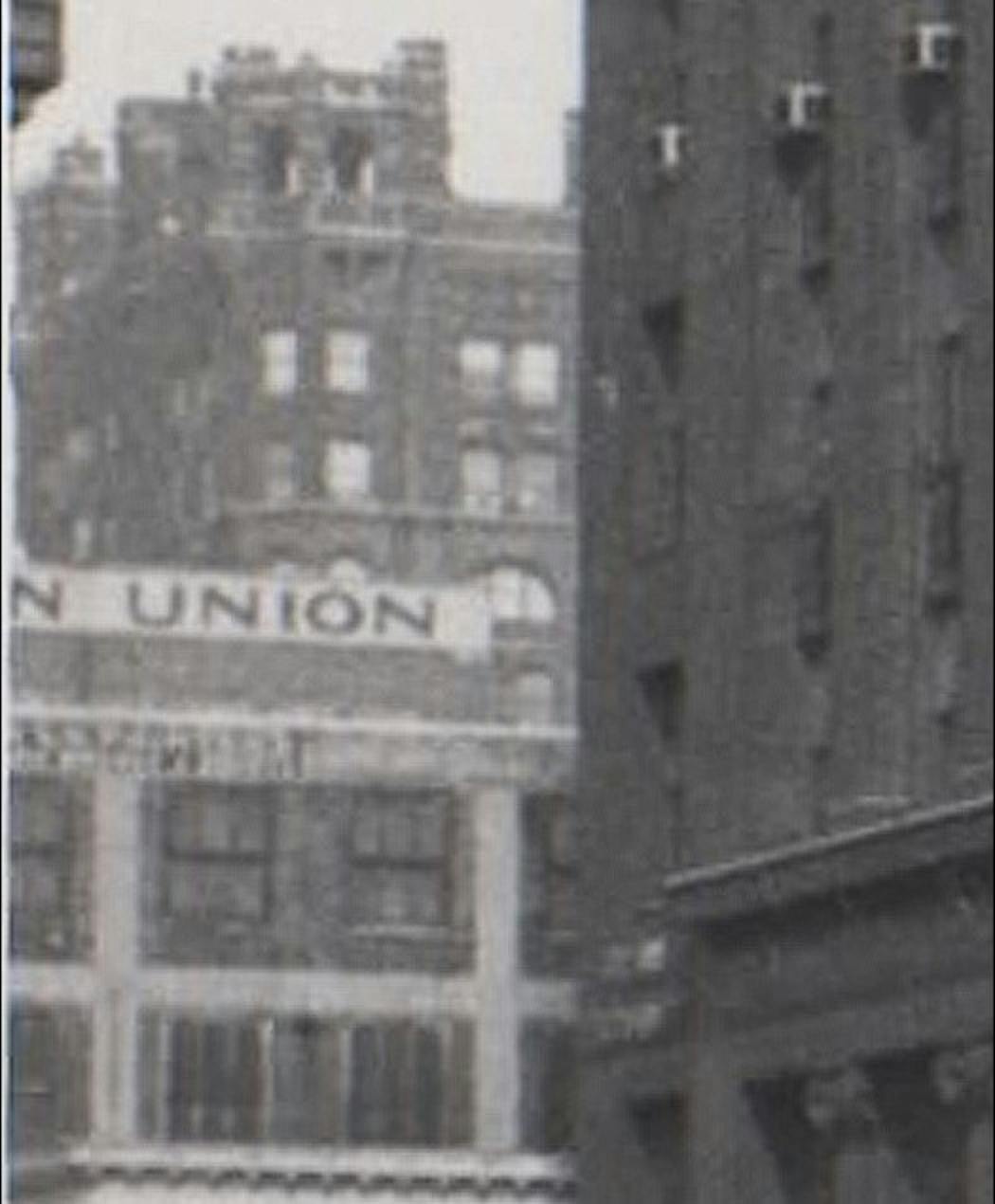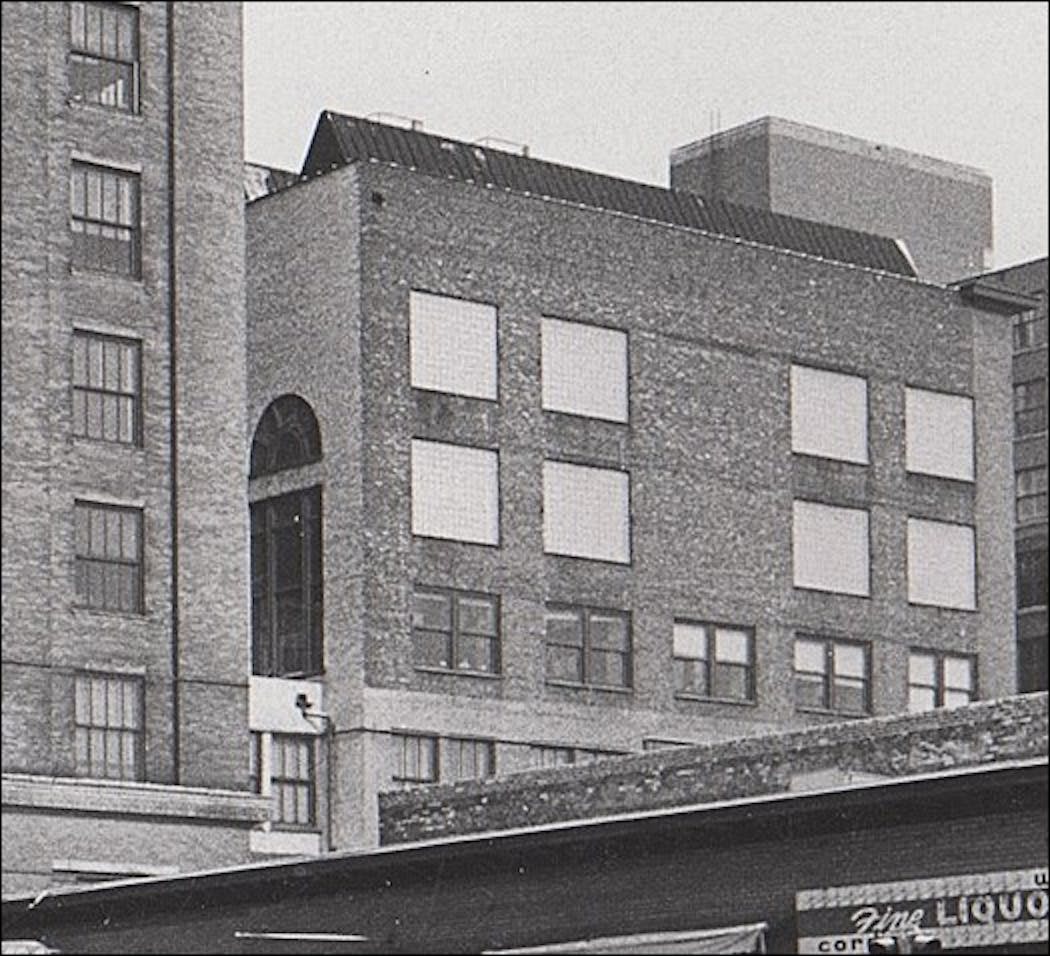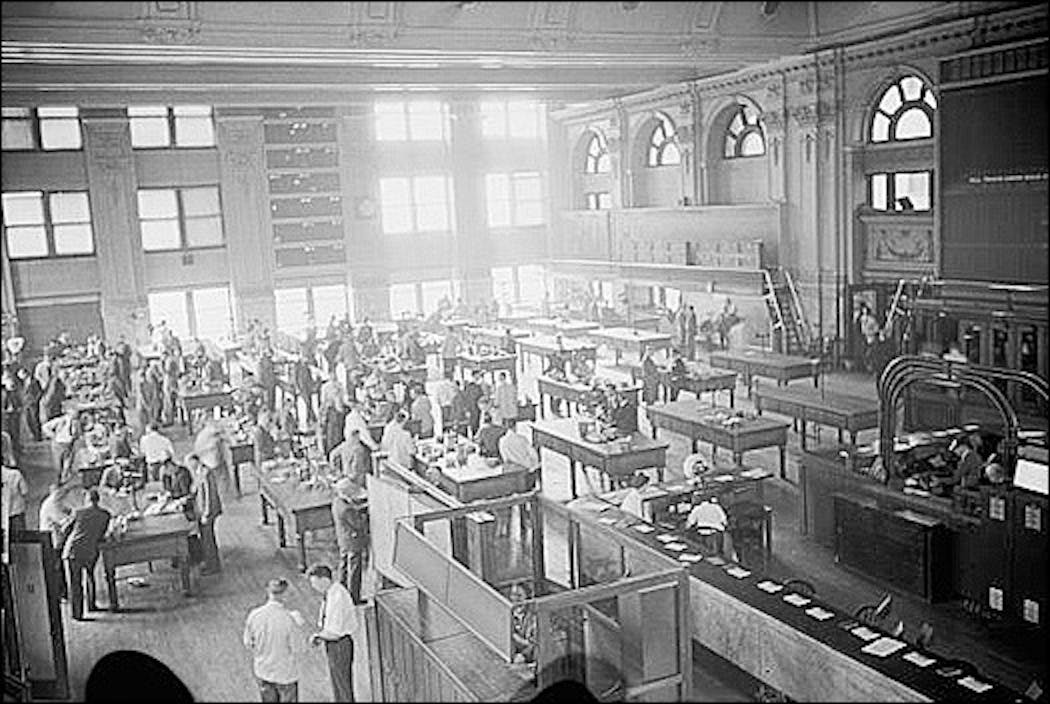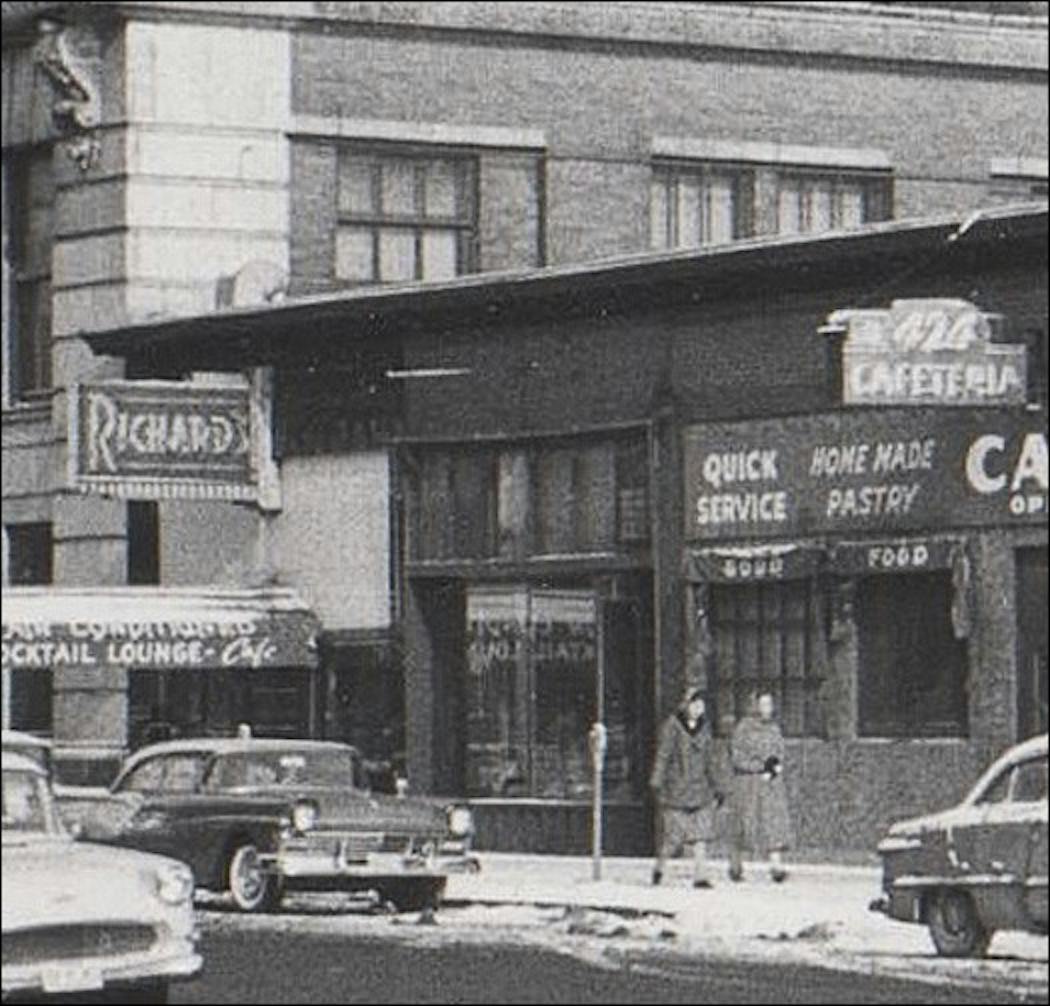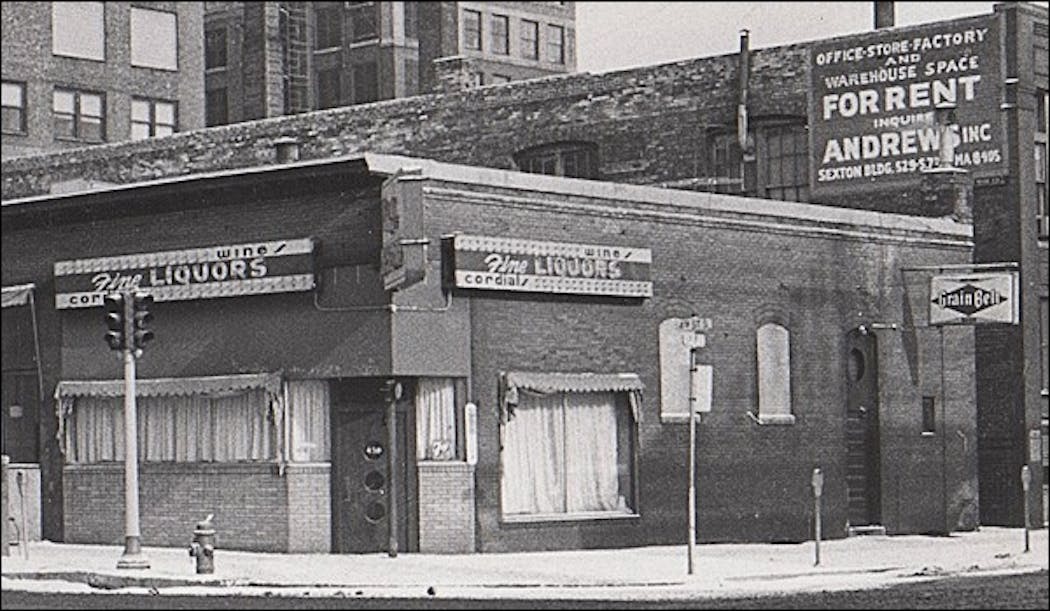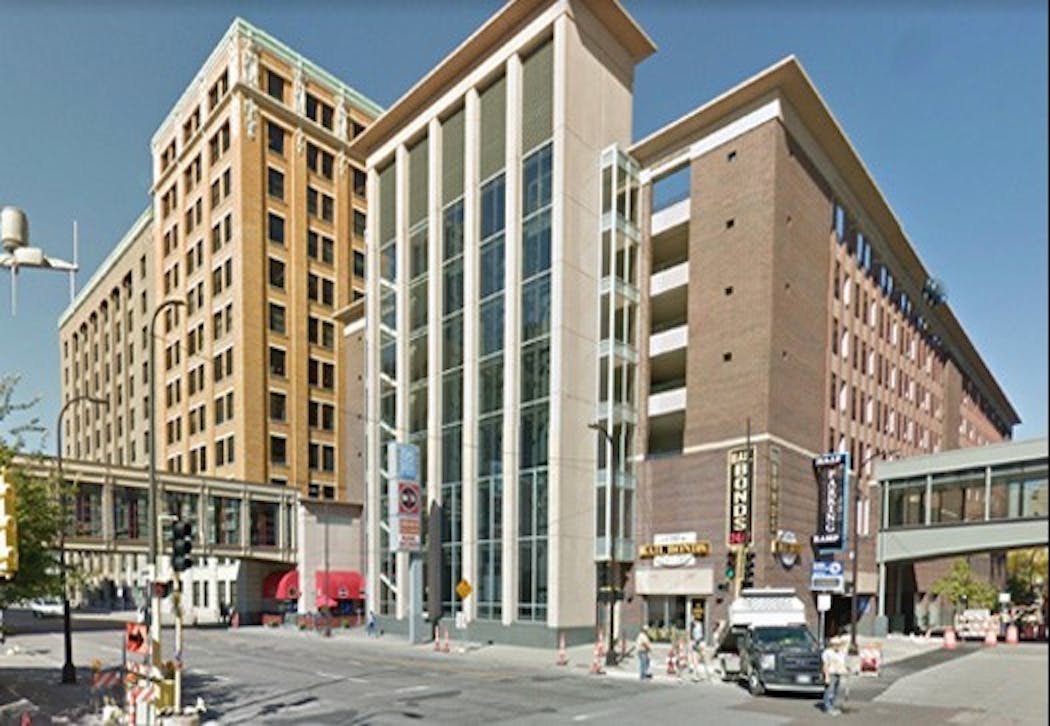In the summer of 1960, the Star Tribune sent photographers to snap a shot of every corner in downtown Minneapolis. This is the latest installment in a series that takes a closer look at those pictures, and passes on a few pieces of Minneapolis history.
Let's start with a late winter picture of a familiar street corner.
It is familiar, right? Perhaps not the buildings on the right. But the taller structures are part of the Chamber of Commerce/Grain Exchange complex, three buildings where fortunes were made by shouting prices at other people in a big room. Details:
Peeking out from the corner on the left is the top of the Metropolitan Building, the loss of which is an obligatory lament during any discussion of downtown history.
At least no one had it in their bright buzzy noggin to tear down the Grain Exchange. That's the dark, square building on the left-hand corner.
It was a startlingly modern building for 1902. Never mind the steel-frame construction, a first in town -- the exterior decorations broke with all historical precedent, swapping classical details for floral abstractions based on the new principles of Louis Sullivan.
By the time they built the taller building in 1928, the organic abstractions of Sullivan's style had fallen out of favor. They really weren't that popular to begin with, to be honest; we love the Sullivan-inspired work today, but it's rare, and you suspect it struck too many people as a bit ... weird.
So the new building was designed in the safe, sober classical style. It took its cues from an era two millennia past. And it was the latest thing.
A hint of the Grain Exchange's interior can be seen here:
The windows of the trading room. The Library of Congress has a few from the inside; you can line up the windows to see what was where.
But one couldn't trade grain all day; you needed to eat. A selection of small, unimpressive restaurants occupied the small, unimpressive building on the corner:
Richard's, and a cafeteria named "424 Cafeteria." But then there was a place that was the source of more merriment than its shopworn front suggested.
It's the Little Wagon. As in "he fell off the." It used to be the Star Tribune's watering hole, back in the time when journalists would put away a few at lunch time. As the Strib's Neal St. Anthony wrote when its last incarnation closed in 2007:
"A downtown Minneapolis bar and grill since the Great Depression, the Wagon boasts generations of sometimes-listing patrons -- cops, printers, lawyers, judges, politicians, orchestra conductors, bankers, brokers, grain traders, musicians, artists, scribes and others."
This is a genuine glimpse into bygone Minneapolis:
"In 1983, Mayor Don Fraser cut the ribbon at a ceremony for the new first-floor bathrooms at the Wagon. Downtown Minneapolis was hungry for any investment in those days. As a practical matter, customers were happy that they no longer had to risk falling down the rickety steps leading to the old, dank, far-too-aromatic basement bathrooms."
Those were the days. The block was torn down in 1992 for the Jerry Haaf parking ramp, named after a murdered cop. The Wagon reopened on the ground floor of the ramp, but of course it wasn't the same; it's been gone for years.
But the rest of the block looks the same. We may lament the loss of the smaller, human-scaled buildings, but c'mon: it was a dump. The Haaf ramp is one of the better-looking parking ramps downtown, and it's on the skyway thread through the block to the new Wells Fargo tower, overlooking the new park, en route to the new stadium. It's a world the Wagon habitués would have been stunned to see in 1967 -- to say nothing of the Grain Exchange traders from 1917.

Kao Kalia Yang, Edel Rodriguez and others bring us gorgeous new picture books
After 4 decades in music and major vocal surgery, Jon Bon Jovi is optimistic and still rocking

Lt. Gov. Peggy Flanagan hits the runway at Native Nations Fashion Night



